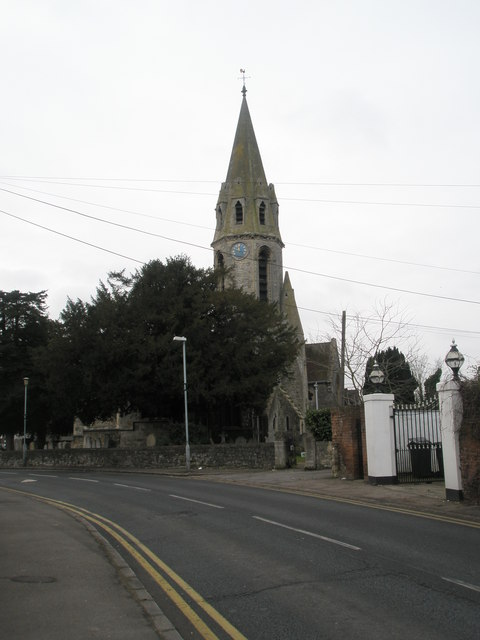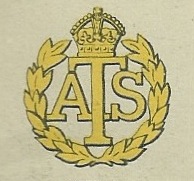|
183rd (Mixed) Heavy Anti-Aircraft Regiment, Royal Artillery
183rd (Mixed) Heavy Anti-Aircraft Regiment was an air defence unit of Britain's Royal Artillery formed during World War II. Around two-thirds of its personnel were women from the Auxiliary Territorial Service (ATS). The regiment was heavily engaged in Operation Diver, defending England against V-1 flying bombs, and later was deployed to Antwerp to carry out anti-Diver duties there in the closing stages of the war. Organisation By 1941, after two years of war Anti-Aircraft Command, tasked with defending the UK against air attack, was suffering a manpower shortage. In April its commander-in-chief, Lieutenant-General Sir Frederick 'Tim' Pile, proposed to overcome this by utilising the women of the Auxiliary Territorial Service (ATS). The ATS was by law a non-combatant service, but it was decided that Defence Regulations permitted the employment of women in anti-aircraft (AA) roles other than actually firing the guns. They worked the radar and plotting instruments, range-finders and ... [...More Info...] [...Related Items...] OR: [Wikipedia] [Google] [Baidu] |
Flag Of The British Army
A flag is a piece of fabric (most often rectangular or quadrilateral) with a distinctive design and colours. It is used as a symbol, a signalling device, or for decoration. The term ''flag'' is also used to refer to the graphic design employed, and flags have evolved into a general tool for rudimentary signalling and identification, especially in environments where communication is challenging (such as the maritime environment, where semaphore is used). Many flags fall into groups of similar designs called flag families. The study of flags is known as "vexillology" from the Latin , meaning "flag" or "banner". National flags are patriotic symbols with widely varied interpretations that often include strong military associations because of their original and ongoing use for that purpose. Flags are also used in messaging, advertising, or for decorative purposes. Some military units are called "flags" after their use of flags. A ''flag'' (Arabic: ) is equivalent to a brigade ... [...More Info...] [...Related Items...] OR: [Wikipedia] [Google] [Baidu] |
Datchet
Datchet is a village and civil parish in the Royal Borough of Windsor and Maidenhead in Berkshire, England, located on the north bank of the River Thames. Historically part of Buckinghamshire, and the Stoke Hundred, the village was eventually transferred to Berkshire, under the Local Government Act of 1972. The village developed because of its close proximity to Windsor and the ferry service which connected it to the main London Road across the River Thames. The ferry was later replaced by a road bridge at the foot of the High Street, which was rebuilt three times, a rail bridge approaching Windsor across the river, and two road bridges above and below the village. The name "Datchet" is thought to be Celtic in origin, and the last part may be related to ''cet'' ("wood"). In the Domesday Book it is called "Daceta". History There is evidence of habitation in the area shortly after the end of the last ice age, between 10,000 and 6,500 years ago, and of a multi-period settlement a ... [...More Info...] [...Related Items...] OR: [Wikipedia] [Google] [Baidu] |
Luftwaffe
The ''Luftwaffe'' () was the aerial-warfare branch of the German ''Wehrmacht'' before and during World War II. Germany's military air arms during World War I, the ''Luftstreitkräfte'' of the Imperial Army and the '' Marine-Fliegerabteilung'' of the Imperial Navy, had been disbanded in May 1920 in accordance with the terms of the 1919 Treaty of Versailles which banned Germany from having any air force. During the interwar period, German pilots were trained secretly in violation of the treaty at Lipetsk Air Base in the Soviet Union. With the rise of the Nazi Party and the repudiation of the Versailles Treaty, the ''Luftwaffe''s existence was publicly acknowledged on 26 February 1935, just over two weeks before open defiance of the Versailles Treaty through German rearmament and conscription would be announced on 16 March. The Condor Legion, a ''Luftwaffe'' detachment sent to aid Nationalist forces in the Spanish Civil War, provided the force with a valuable testing grou ... [...More Info...] [...Related Items...] OR: [Wikipedia] [Google] [Baidu] |
The Auxiliary Territorial Service At An Anti-aircraft Gun Site In Britain, December 1942 TR474
''The'' () is a grammatical article in English, denoting persons or things already mentioned, under discussion, implied or otherwise presumed familiar to listeners, readers, or speakers. It is the definite article in English. ''The'' is the most frequently used word in the English language; studies and analyses of texts have found it to account for seven percent of all printed English-language words. It is derived from gendered articles in Old English which combined in Middle English and now has a single form used with pronouns of any gender. The word can be used with both singular and plural nouns, and with a noun that starts with any letter. This is different from many other languages, which have different forms of the definite article for different genders or numbers. Pronunciation In most dialects, "the" is pronounced as (with the voiced dental fricative followed by a schwa) when followed by a consonant sound, and as (homophone of pronoun ''thee'') when followed by a v ... [...More Info...] [...Related Items...] OR: [Wikipedia] [Google] [Baidu] |
38th Light Anti-Aircraft Brigade (United Kingdom)
The 38th Light Anti-Aircraft Brigade (38 AA Bde) was an air defence formation of Britain's Territorial Army formed just before the Second World War, which protected London and Southern England during the Blitz and later converted into an infantry formation for the liberation of Europe. Origins The brigade headquarters was formed on 28 September 1938 by duplicating the 26th (London) Anti-Aircraft Brigade at the Duke of York's Headquarters in Chelsea, London, as part of the expansion of Britain's Anti-Aircraft (AA) defences before the Second World War. The brigade was composed of searchlight units of the Royal Artillery (RA) and Royal Engineers (RE) and formed part of 1st AA Division, which came under Anti-Aircraft Command the following year.Frederick, pp. 1050–1. The first brigade commander was Brigadier W.T.O. Crewdson (appointed 28 September 1938). Mobilisation The deterioration in international relations during 1939 led to a partial mobilisation of the TA in June, after wh ... [...More Info...] [...Related Items...] OR: [Wikipedia] [Google] [Baidu] |
160th (Mixed) Heavy Anti-Aircraft Regiment, Royal Artillery
Sixteen or 16 may refer to: *16 (number), the natural number following 15 and preceding 17 *one of the years 16 BC, AD 16, 1916, 2016 Films * '' Pathinaaru'' or ''Sixteen'', a 2010 Tamil film * ''Sixteen'' (1943 film), a 1943 Argentine film directed by Carlos Hugo Christensen * ''Sixteen'' (2013 Indian film), a 2013 Hindi film * ''Sixteen'' (2013 British film), a 2013 British film by director Rob Brown Music *The Sixteen, an English choir *16 (band), a sludge metal band *Sixteen (Polish band), a Polish band Albums * ''16'' (Robin album), a 2014 album by Robin * 16 (Madhouse album), a 1987 album by Madhouse * ''Sixteen'' (album), a 1983 album by Stacy Lattisaw *''Sixteen'' , a 2005 album by Shook Ones * ''16'', a 2020 album by Wejdene Songs * "16" (Sneaky Sound System song), 2009 * "Sixteen" (Thomas Rhett song), 2017 * "Sixteen" (Ellie Goulding song), 2019 *"16", by Craig David from ''Following My Intuition'', 2016 *"16", by Green Day from ''39/Smooth'', 1990 *"16", by Hi ... [...More Info...] [...Related Items...] OR: [Wikipedia] [Google] [Baidu] |
Princess Royal Barracks, Deepcut
The Princess Royal Barracks, Deepcut, commonly referred to as Deepcut Barracks, is a former British Army installation near Camberley, Surrey. It was the headquarters of the Royal Logistic Corps (RLC) and also the Defence College of Logistics, Policing and Administration, before both moved to Worthy Down Camp. History The area had been used as a training ground for the army from the late 19th century with no formal military infrastructure until 1900 when the Royal Engineers commenced the build of a number of camps, including Blackdown. The land was owned by the Pain family of Frimley Green who built a number of high status dwellings on the land. Blackdown Camp was established in the late 1903 initially to accommodate artillery and infantry, centred on Winchester house, renamed Blackdown House when it was appropriated by the War Office for military use. The barracks built in Blackdown Camp were Minden, Dettingen, Alma, Frith, Aisne and Marne Barracks. The Victorian houses were dem ... [...More Info...] [...Related Items...] OR: [Wikipedia] [Google] [Baidu] |
Arborfield Garrison
Arborfield Garrison was a British Army garrison, now the site of Arborfield Green, a new village approximately south east of the village of Arborfield Cross in the English county of Berkshire. The army vacated the site in 2015 and it is now being redeveloped for housing, with a total of 3,500 homes planned. The Garrison and its associated housing estates are split between the civil parishes of Arborfield and Newland and Barkham. Both parishes are within the unitary authority of Wokingham. According to the Post Office the majority of the 2011 Census population was included in the civil parish of Barkham. History The garrison, which was initially operated by the Army Remount Service and supplied the military with horses for both operational and ceremonial purposes, was established as the Remount Depot in 1904. The depot operated throughout the First World War and most of the inter-war period before closing in 1937. During the Second World War, part of the garrison functioned a ... [...More Info...] [...Related Items...] OR: [Wikipedia] [Google] [Baidu] |
137th (Mixed) Heavy Anti-Aircraft Regiment, Royal Artillery
137th (Mixed) Heavy Anti-Aircraft Regiment was an air defence unit of Britain's Royal Artillery formed during World War II. It was one of the first 'Mixed' regiments in which women of the Auxiliary Territorial Service were integrated into the unit's personnel. It defended the United Kingdom against aerial attack until it deployed to Belgium in January 1945 to defend Brussels against V-1 flying bombs. Organisation By 1941, after two years of war Anti-Aircraft Command, tasked with defending the UK against air attack, was suffering a manpower shortage. In April its commander-in-chief, Lieutenant-General Sir Frederick 'Tim' Pile, proposed to overcome this by utilising the women of the Auxiliary Territorial Service (ATS). The ATS was by law a non-combatant service, but it was decided that Defence Regulations permitted the employment of women in anti-aircraft (AA) roles other than actually firing the guns. They worked the radar and plotting instruments, range-finders and predictors, ra ... [...More Info...] [...Related Items...] OR: [Wikipedia] [Google] [Baidu] |
Oswestry
Oswestry ( ; ) is a market town, civil parish and historic railway town in Shropshire, England, close to the Welsh border. It is at the junction of the A5, A483 and A495 roads. The town was the administrative headquarters of the Borough of Oswestry until that was abolished in 2009. Oswestry is the third-largest town in Shropshire, following Telford and Shrewsbury. At the 2011 Census, the population was 17,105. The town is five miles (8 km) from the Welsh border and has a mixed English and Welsh heritage. Oswestry is the largest settlement within the Oswestry Uplands, a designated natural area and national character area. Toponym The name ''Oswestry'' is first attested in 1191, as ''Oswaldestroe''. This Middle English name transparently derives from the Old English personal name Ōswald and the word ''trēow'' ('tree'). Thus the name seems once to have meant 'tree of a man called Ōswald'.A. D. Mills, ''A Dictionary of English Place Names'' (Oxford: Oxford Universit ... [...More Info...] [...Related Items...] OR: [Wikipedia] [Google] [Baidu] |


.png)


